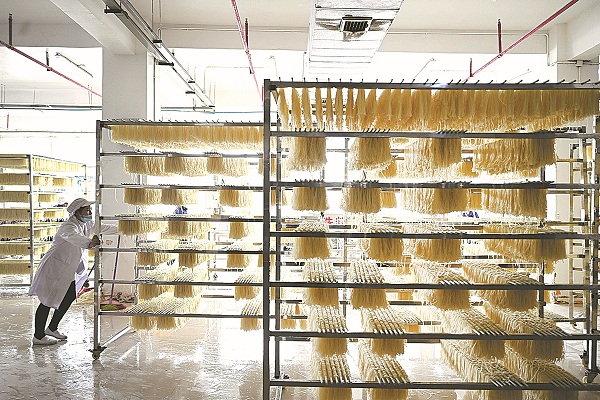Humble street snack rides fresh wave of popularity

An employee moves a rack of rice noodles at a workshop where they are dried in a luosifen industrial park in Liuzhou in December 2020. [LI HANCHI/FOR CHINA DAILY]
Efficiency improved
"The automated production line also reduced the original 15 workers needed on a production line to two people, greatly improving efficiency, saving labor and redirecting resources," Mo said.
"Many of our automation research and development team members come from large enterprises in Liuzhou. If it weren't for Liuzhou's good industrial foundation, this would definitely not be possible," he added.
The noodle dish continues to be major calling card for Liuzhou, coming a long way from its street snack origins in the 1970s. In a nod to the importance of luosifen to Liuzhou extending beyond its economy to cover the social and cultural spheres, the dish has also been included on the latest national intangible cultural heritage list, further increasing its popularity at home and abroad.
Adeleye Martins Adedamola, a student at the International College of Guangxi University of Science and Technology in Liuzhou, is among foreign fans of luosifen.
"I'm really addicted to the tasty Liuzhou river snails rice noodles," said Adedamola, a dual citizen of Nigeria and the United States.
"I'd order two marinated eggs, some duck kidney slices, vegetables and deep-fried bean curd as toppings for the noodles."
Ken Fletcher, a Briton who works at the Liuzhou Foreign Affairs Office, said: "When I found out about this dish, I was surprised. All foreigners seem to like it. It's very popular."
"I also have friends from other parts of Guangxi, not just Liuzhou. Some are living in America or Australia and I believe they will really be happy if they can buy packaged luosifen to make."
